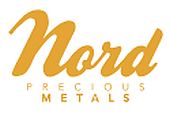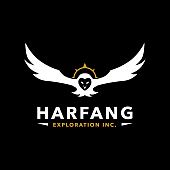 Kenorland drills 21.5 m of 0.40 g/t Au at Chebistuan
Kenorland drills 21.5 m of 0.40 g/t Au at Chebistuan
2023-06-27 15:35 ET – News Release
Mr. Zach Flood reports
KENORLAND ANNOUNCES GRASSROOTS DISCOVERY OF INTRUSION-RELATED GOLD SYSTEM AT THE CHEBISTUAN PROJECT, QUEBEC
Kenorland Minerals Ltd. has made a grassroots discovery of an intrusion-related gold system during the maiden diamond drill program at the Chebistuan project, located in the northern Abitibi greenstone belt of Quebec and held under an exploration agreement with Newmont Corp. Results from 2,170 metres of drilling, including seven drill holes, are reported herein.
Drill Highlights
Seven shallow holes, up to 358m in length were drilled along two fences to test across a structural and magnetic corridor within the Deux Orignaux target area. Along the eastern drill fence, hole 23DODD005 intersected a mineralised porphyritic syenite intrusion over 157.20m averaging 0.41 g/t Au from 84.41m to 241.61m downhole, including 20.61m at 0.97 g/t Au with individual samples returning up to 7.14 g/t Au over 0.31m along the northern contact zone. The intrusion is mineralised throughout with minor disseminated pyrite and trace sphalerite associated with pervasive potassic and albite alteration (Kspar-albite-quartz-hematite-carbonate-sericite alteration assemblage). Hole 23DODD004 undercut 23DODD005, returning 21.50m at 0.40g/t Au, incl. 8.50m at 0.72 g/t Au, along the southern contact with the syenite and ended in mineralisation.
Zach Flood, President and CEO of Kenorland Minerals, states, “The grassroots discovery of another significant gold system is a major milestone for our company and is a testament to our exploration strategy, as well as the expertise of our exploration team. Following over two years of systematic geochemical exploration, initially covering over 178,000 hectares of ground, we managed to make this discovery with a very limited initial drill program, and we believe we’ve only scratched the surface of this intrusion-related gold system. We’re very excited to see how this evolves moving forward.”
The mineralised intrusion at Deux Orignaux, defined by coincident resistivity, chargeability, and magnetic anomalies, was intersected along the regional clastic sedimentary basin – volcanic rock contact marked by Timiskaming type polymictic conglomerates. There is strong potential to extend known mineralisation to the east and at depth where the geophysical signature remains open, as well as the potential for discovering additional mineralised intrusions, interpreted from geophysics, in the immediate area surrounding the discovery.
Alkaline, intrusive-hosted disseminated sulphide gold systems represent a significant deposit type across the Abitibi greenstone belt including the Young-Davidson deposit along the Larder Lake-Cadillac fault zone, and the Duparquet deposit along the Destor-Porcupine fault zone. Many of these systems have potential for higher grade mineralisation such as the Lac Bachelor-Moroy deposit, located approximately 75km to the southwest of the Deux Orignaux discovery.
Deux Orignaux Target Area
The Deux Orignaux target area was identified during property-wide systematic geochemical sampling in 2020, with subsequent infill sampling leading to an area of anomalous gold geochemistry and gold grains in glacial overburden. The target area is spatially associated with the regional contact between a clastic sedimentary basin (Opemiska Group) and volcanic rocks along a first order basin bounding structure.Figure 3. Chebistuan Project Geology and Gold-in-till GeochemistryTo view an enhanced version of this graphic, please visit:https://images.newsfilecorp.com/files/6489/171133_5f57203ba4989a18_003full.jpg.
About the Chebistuan Project
The Chebistuan Project consists of 2,918 claims (158,635 ha) 100% owned by Kenorland. The property covers approximately 100 kilometers of a major east-west trending deformation zone which may represent the continuation of the Sunday Lake Deformation Zone; host to major gold deposits such as Detour Lake (Kirkland Lake Gold Ltd.) and Fenelon (Wallbridge Mining Company Ltd.). The Chibougamau and Chapais mining camps, which have produced over 6.5Moz of gold and 1.6 billion pounds of copper historically, are located directly to the east of the Chebistuan property. The Project is largely covered with glacial till and is accessed through a network of logging roads and by helicopter.
The Project is currently under an exploration agreement (the “Agreement”) with a venture option (the “Joint Venture”) with Newmont. The Agreement provides an option for a two-phased exploration earn-in over three years, where Newmont can earn a 51% interest in the Project through certain exploration expenditures and cash payments to Kenorland. The initial phase of the Agreement consists of a property- wide geochemical sampling program, target definition and testing. Newmont then has the option to earn an additional 29% interest for a cumulative 80% interest (the “Phase Two Earn-in”) in the Project over six years by defining a 1.5Moz Au resource through a pre-feasibility stage study inline with NI43-101 Standards of Disclosure for Mineral Projects, as well as making certain cash payments to Kenorland. The parties may continue to explore and develop the property through an 80% Newmont, 20% Kenorland Joint Venture or, in the case of a construction decision, Kenorland can elect for Newmont to finance its portion of mine development cost. If Newmont elects not to continue with the Phase Two Earn-in, ownership interest in the project can switch to 51% Kenorland and 49% Newmont.
 |
QA/QC and Core Sampling Protocols
All drill core samples were collected under the supervision of Kenorland employees. Drill core was transported from the drill platform to the logging facility where it was logged, photographed, and split by diamond saw prior to being sampled. Samples were then bagged, and blanks and certified reference materials were inserted at regular intervals. Groups of samples were placed in large bags, sealed with numbered tags in order to maintain a chain-of-custody, and transported from Chapais to Bureau Veritas Commodities (“BV”) laboratory in Timmins, Ontario.
Sample preparation and analytical work for this drill program were carried out by BV. Samples were prepared for analysis according to BV method PRP70-250: individual samples were crushed to 2mm (10 mesh) and a 250g split was pulverized to 75mum (200 mesh) for analysis and then assayed for gold. Gold in samples were analyzed using BV method FA430 where a 30g split is analyzed with fire assay by Pb collection and AAS finish. Multi-element geochemical analysis (45 elements) was performed on all samples using BV method MA200 where a 0.25g split is by multi-acid digest with ICP-MS/ES finish. All results passed the QA/QC screening at the lab, all company inserted standards and blanks returned results that were within acceptable limits.
Qualified Person
Cedric Mayer, M. Sc., P. Geo. (OGQ #02385), “Qualified Person” under National Instrument 43-101, has reviewed and approved the scientific and technical information in this press release.
About Kenorland Minerals Ltd.
Kenorland Minerals Ltd. (TSXV: KLD) is a mineral exploration company incorporated under the laws of the Province of British Columbia and based in Vancouver, British Columbia, Canada. Kenorland’s focus is early to advanced stage exploration in North America. The Company currently holds five projects in Quebec where work is being completed under joint venture and earn-in agreements from third parties. The Frotet Project and Chicobi Project are held under joint venture with Sumitomo, the O’Sullivan Project is optioned to Sumitomo, the Chebistuan Project is optioned to Newmont Corporation and the Hunter Project is held under option to Centerra Gold Inc. In Alaska, the Company holds the advanced stage Tanacross porphyry Cu-Au-Mo project, optioned to Antofagasta, as well as a 70% interest in the Healy Project, held under joint venture with Newmont Corporation.
We seek Safe Harbor.
https://www.kenorlandminerals.com/






















